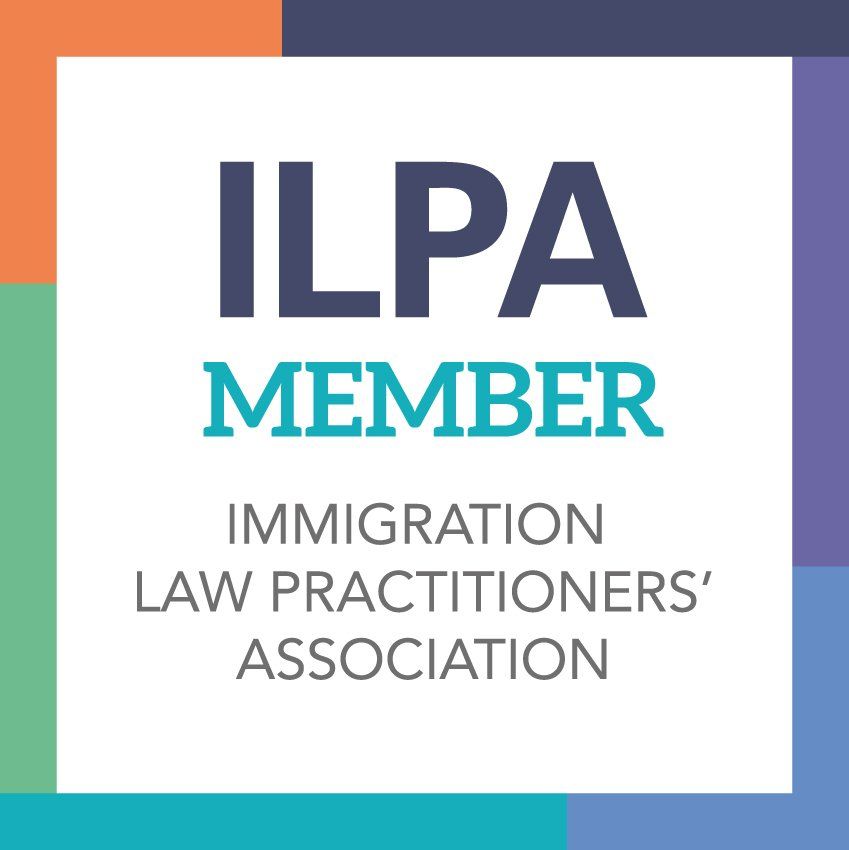Understanding RLMT
Understanding the purpose of a RLMT and the SOC purpose
The Home Office introduced the RLMT as part of the points-based system in 2008 which helped streamline 80 visa routes for the UK.
The RLMT is not required to employ EEA nationals (nationals of EU member states) but was introduced to allow UK organisations needing to recruit non-EEA nationals that fall under the points-based system (immigration control). Non-EEA nationals that no longer fall under immigration control can be employed outside of the RLMT guidelines.
Who needs to be employed under a RLMT?
If the UK organisation intends to hire skilled workers under Tier 2 or Tier 5 temporary workers under the points-based system, the job advert must comply with the Home Office RLMT guidelines.
Most jobs under Tier 2 will fall under RQF Level 6. Jobs advertised under Tier 5, fall under different guidelines. Not all Tier 5 requires an RLMT.
RLMT Foundations
Standard Occupational Classification (SOC) codes governs the RLMT. If you do not apply the RLMT to the right SOC code, the RLMT is non-compliant which means the UK organisation cannot sponsor a non-EEA national that falls or would fall under the immigration rules of the points-based system.
If you do not understand the SOC code rules, you should contact us for free advice.
To view the old SOC code rules, click here.
Purpose of RLMT?
Why carry out a RLMT and if we do, who can we employ?
Once the UK organisation has carried out a RLMT, they can apply for a sponsor licence. A sponsor licence
is approved by the Home Office (cloud-based Sponsorship Management System). If the Home Office approves the application, the UK organisation will have a login to the portal that allows them to employ non-EEA nationals under Tier 2 and Tier 5.
In most cases a RLMT must be carried out for 28 days unless the job position falls under the exemption rules which you can find out more about below. Once the job advert has been advertised in accordance to the immigration rules for period, a Certificate of Sponsorship (CoS) can be issued.
The Home Office has 3 core types of CoSs, they are:
- Standard CoS
- Unrestricted CoS (Tier 2 General only)
- Restricted CoS (Tier 2 General only)
Standard CoSs can only be issued to the following Tier 2 non-EEA nationals:
Unrestricted CoS can be issued to Tier 2 General non-EEA nationals:
These can only be issued to non-EEA nationals who are permitted to apply within the UK for their visa. This means the non-EEA national holds a valid CoS to either:
- Switch into Tier 2 General from another visa category
- Extend their existing tier 2 General visa
- Change Tier 2 employer to another Tier 2 employer under General
Restricted CoS can be issued to Tier 2 General non-EEA nationals:
These can only be issued to non-EEA nationals who need to enter the UK on an entry visa under Tier 2 General
RLMT Exemptions
Not every position needs a RLMT, learn which are exempt
Continuing to work in the same occupation
If the UK organisation employs a Tier 2 or Tier 5 worker and they need to extend their right to work in the UK under either Tier, they do not need to carry out a new RLMT.
Shortage Occupation
If the job is on the shortage occupation list, the UK organisation does not need to carry out a RLMT. The shortage occupation list falls under Appendix K
of the immigration rules.
Note: Their are different shortage occupational for the UK and Scotland.
Post-Study Work
It is very unlikely now that any non-EEA national holds this visa as this visa route closed in April 2012. If the non-EEA national was granted this visa, once the visa expired on two years, they could switch into Tier 2 without a RLMT being required.
High Earners
If the job vacancy is at or above £159,600, no need to carry out a RLMT to employ a non-EEA national under Tier 2.
Academic Leave
You do not have to carry out a RLMT if you are a Higher Education Institution and were previously sponsoring a migrant who is returning to resume their post following a period of academic leave. The non-EEA national must have previously been granted entry clearance or leave to remain as a Tier 2 (General) migrant and the break in their employment must have been solely due to a period of academic leave. This does not override the rules on cooling off periods which will still apply if the migrant is still applying to return to the UK.
Established Researcher
You do not have to carry out a RLMT if you are a Higher Education Institution or Research Council and you wish to sponsor a non-EEA national to continue working as a member of an existing research team or, the the non-EEA national has previously worked with the lead researcher as part of their team for a continuous period of 12-month immediately before the date of the application (or for 12 months during the 24 months immediately before the date of the application, if the migrant has been on maternity leave, paternity leave, shared parental leave, adoption leave or long-term sick leave during that time).
Supernumerary Research Positions
You do not have to carry out a RLMT where the job is in a supernumerary research position, over and above the UK organisation's normal staffing requirements. This is where the non-EEA national has been issued a scientific research award or fellowship by an external organisation and that award is not transferable and the role wouldn’t be filled by anyone else if the non-EEA national withdrew from the project. The award or fellowship has ended but you are continuing to sponsor the non-EEA national so that they can continue to undertake this research.
Postgraduate doctors and dentists in speciality training
You do not have to carry out a RLMT if the non-EEA national will be sponsored as a doctor in speciality training where their salary and the costs of their training are being met by the government of another country under an agreement with the UK government. The non-EEA national has already started speciality training as a doctor or dentist in the UK and they are applying to continue that training or return to that training (with the same National Training Number) after an out-of-programme experience. The UK organisation must confirm on the non-EEA national CoS that this exception to the RLMT applies.
If a speciality training doctor or dentist wishes to undertake an out-of-programme experience in the UK, then the UK organisation providing this will need to become the new sponsor. The current sponsor must tell the Home Office that they no longer have sponsorship responsibilities for the non-EEA national because they are taking an out-of-programme experience. If you are the sponsor that is offering the out of programme experience, you must have carried out the RLMT test before you assign a CoS.
When the out-of-programme experience in the UK has finished, the non-EEA national may need to return to their speciality training. the UK organisation must assign a new CoS but will not need to carry out a RLMT if the non-EEA national is returning to the same training programme. The UK organisation must confirm on the CoS that an exception to the RLMT applies. This applies if you were the sponsor for the migrant when they did their out-of-programme.
When a non-EEA national is a postgraduate doctor or dentist and is accepted for speciality training, they are given a National Training Number (NTN). They must produce this when asked for, as evidence that the doctor or dentist was undertaking training before the out-of-programme experience.
High value inward investment posts
You do not need to carry out a RLMT where the job offer is for the non-EEA national to work in support of a posting from an overseas firm to you in connection with the relocation of a high value business to the UK or a significant new inward investment project, where:
- the UK organisation was registered in the UK with Companies House no earlier than 3 years before the date the CoS was assigned
- the UK organisation are the registered branch or wholly owned subsidiary of a business which has its headquarters and principal place of business outside the UK
- the relocation or inward investment involves new capital expenditure of £27 million or the creation of at least 21 new UK jobs and
the UK organisation is able to provide evidence of this, if required. The UK organisation or the overseas business of which you are the branch or subsidiary must be the entity directly making the investment - for this purpose, working in support of an inward investment project does not include the supply of services to a third-party client who is making an investment. The capital expenditure or job creation does not need to have taken place before you assign the CoS, but you must be able to provide evidence that this will take place as part of the existing project.
RLMT Guidelines
How to correctly advertise a RLMT in accordance to Home Office rules
If the UK sponsor hires a non-EEA national under Tier 2 or Tier 5 based on a job advert that was used to assign a Certificate of Sponsorship, and if the Home Office deems this job advert to be non-compliant, this could greatly impact the UK sponsor retaining their sponsor licence and skilled migrant workers already employed under either Tier.
Unless exempt, all jobs must be advertised to UK settled workers for 28 calendar days.
You can advertise Tier 2 jobs in two ways:
- Advertise the vacancy for a single continuous period, with a minimum closing date of 28 calendar days from the date the advertisement first appeared or
- advertise the vacancy in different periods such as two stages, with each stage being advertised for no fewer than 7 calendar days but where both stages total a minimum of 28 calendar days. For example, you could at first advertise the vacancy for 14 calendar days and appoint any suitable settled worker who applies. If no suitable settled worker applies, you cannot appoint a migrant worker at this stage as you must advertise the vacancy for a further 14 calendar days, making 28 calendar days in total. If no suitable worker settled applies during either the first or second stage, then the RLMT has been passed and you can appoint a Tier 2 non-EEA national.
If UK settled people do apply to your RLMT or EEA nationals who do not need permission to work in the UK, you must first decide if they are suitable for the job vacancy. You cannot reject one of these applications because the person applying did not have the necessary skills unless, your LMT was specific that you need a candidate with x, y and z essential skill sets because these skill sets are a must have to do the job. A way to look at this is, the pay being offered, if the pay is more at the level of a graduate or lower level then the Home Office would expect you to employ a person to train up but, if your advertised salary is more towards the high end, the Home Office would not expect you to train someone up when you pay top dollar.
If the salary of the job on offer is at or above £73,900 per annum, the job does need to be advertised through the jobcentre via GOV.UK.
Note: The job advertisement must be in English, or Welsh if based in Wales.
RLMT Check List
What you need to advertise to comply with a Home Office RLMT
Unless you post the right information in your job advert, the RLMT is invalid if you plan to hire under Tier 2 or Tier 5. Key data to advertise includes:
- Job title
- Main duties and responsibilities of the job (job description)
- Job location (where the person will be working)
- Indication of the salary package (including allowances) or salary range or terms on offer, the ‘Rates of pay’ section has more information*
- Skills, qualifications and experience needed
- Closing date for applications, unless it is part of a rolling recruitment programme (If it is a rolling recruitment programme, the advertisement should show the period of the recruitment programme).
*When you advertise a salary, if looking to employ under Tier or Tier 5, you need to look at the SOC code list for salary guidance. Under Tier 2 General you generally have to pay at least £30,000 per annum
regardless if the SOC code states a lesser salary.
Advertising Guidelines
How you can advertise your job vacancies in accordance to the RLMT guidelines
When you post a job it must be in English unless the job is based in Wales.
Find A Job (Formerly Universal Jobmatch)
Unless exempt or the salary being offered is at or above £73,900 per annum, the job must be advertised through the jobcentre via GOV.UK.
National Newspapers
You can advertise in a national newspaper that is one published at least once a week and marketed throughout the UK or throughout the devolved nation in which the job is located. This could be The Scotsman and The Herald, which are suitable national newspapers for jobs in Scotland; The Western Mail for jobs in Wales; and the Belfast Telegraph for jobs in Northern Ireland.
Professional journal
A professional journal is one published for a particular field and is available nationally either through retail outlets or subscription. The journal must be published at least once a month and be relevant to the job, this could be:
- a relevant trade journal
- the official journal of a professional occupational body
- a relevant subject specific publication.
Milkround
A ‘milkround’ is an annual recruitment programme where employers from a range of sectors visit universities to give presentations and/or interview students, usually as part of university career fairs. If the UK organisation uses a milkround to recruit new graduates or interns, they must visit a minimum of 3 UK universities, or all UK universities which provide the relevant course, whichever is the lower number.
The milkround or graduate recruitment programme does not need to be advertised through Find a job (GOV.UK) or Jobcentre Online in Northern Ireland, to meet the RLMT but must be advertised through 2 methods permitted by the Tier 2 and Tier 5 policy guidance, one of which must be a prominent graduate recruitment website which does not charge a fee to jobseekers to view job advertisements or to apply for jobs via those advertisements.
You must keep evidence to prove that no suitable settled workers were available to fill the vacancy.
Rolling Recruitment Campaigns
Rolling recruitment programmes allow UK organisations to pick out non-EEA nationals who are skilled individuals who might fill future, undefined vacancies rather than specific ones.
The Home Office understands why the UK organisation may want to identify migrants through these programmes and they do not want to stop this happening. However, to meet the requirements of the RLMT when a specific vacancy becomes available, it must be advertised as set out in the Tier 2 and Tier 5 policy guidance
to give settled workers a chance to apply.
Recruitment agency and head-hunters
The UK organisation can use an agency or head-hunter to help with their recruitment. They may recruit for the post on their behalf, but the recruitment exercise must meet the requirements of the RLMT.
Where an agency or head-hunter carries out the recruitment exercise, the UK organisation is fully responsible for the RLMT. If it is not done in line with the immigration rules, the Home Office will take action against the UK organisation.
Internet
The Home Office does not restrict the UK organisation to specific websites. Unless the salary is above the threshold, the job advert must be advertised in 2 places, one of which is the Jobcentre. Then the other applies:
- an online version of a national newspaper that would meet the requirements (see national newspapers for more information on this)
- an online version of a professional journal that would meet the requirements (see professional journal for more information on this)
- website of a prominent or professional recruitment organisation
- If you are a multi-national/global operation, or have over 250 employees in the UK, the UK organisation can advertise the job on their own website
Recruitment Job-Boards
The Home Office would accept job adverts placed within these Internet job-boards:
- CareerBuilder
- Caterer
- CV Library
- Jobsite
- Jora
- Glassdoor
- Google for Jobs
- Indeed (free to advertise)
- Monster
- Reed.co.uk
- The Guardian Jobs
- Total Jobs
Specific Sector Job-boards
- British Engineering Jobs
- British Construction Jobs
- CW Jobs
- Engineering Jobs
- HealtheCareers
- Go Construct
- Jobs4Medical
- Nursing Times
Media
Charity & Religious Job-Boards
- Charity Jobs (free to advertise)
- Jobs.CHURCHTIMES (religious jobs)
- OSCAR (religious jobs)
The above are just some of the big job-boards or specialised job-boards whose job-boards cover the whole of the UK and in many cases Europe and worldwide. If you post a job in a less well known job-board maybe that focuses in your local area, the job-board may not have the volume of visitors from the UK and EU, which is likely to be challenged by the Home Office as a non-compliant job-board. Best to select a job-board or advertising media that covers the whole on the EU.
IF YOU EMPLOY 250 STAFF OR MORE, YOU CAN POST THE JOB ON YOUR OWN WEBSITE IF IT IS DEEMED TO BE A PLACE PEOPLE CAN SEARCH FOR JOBS.



